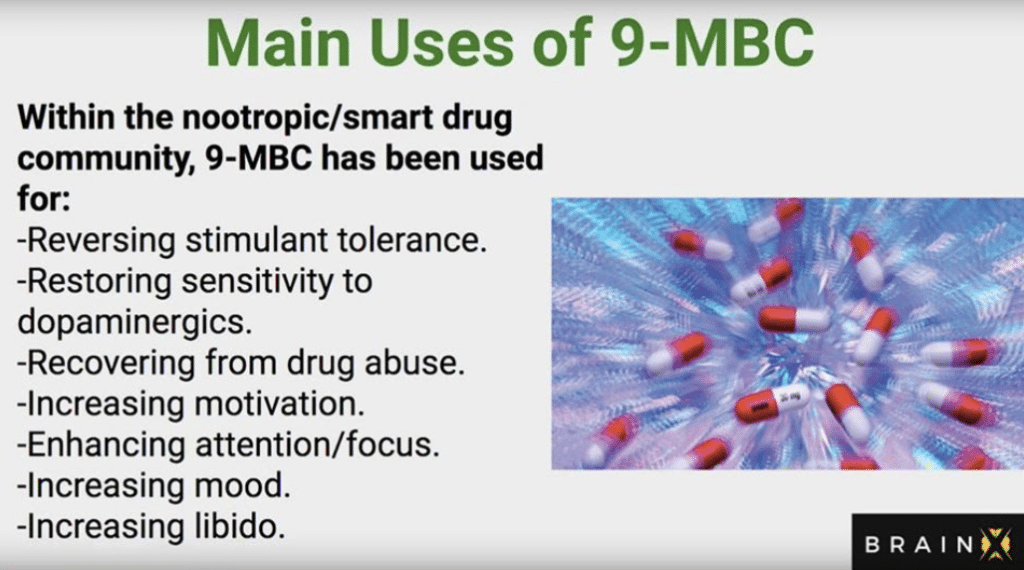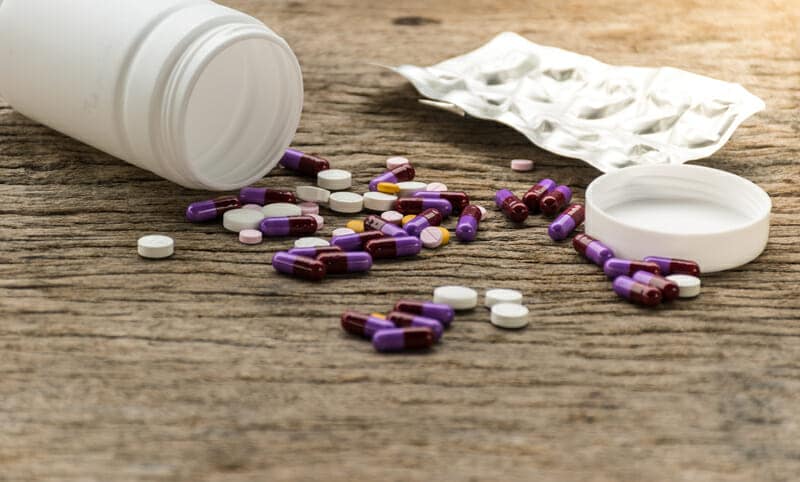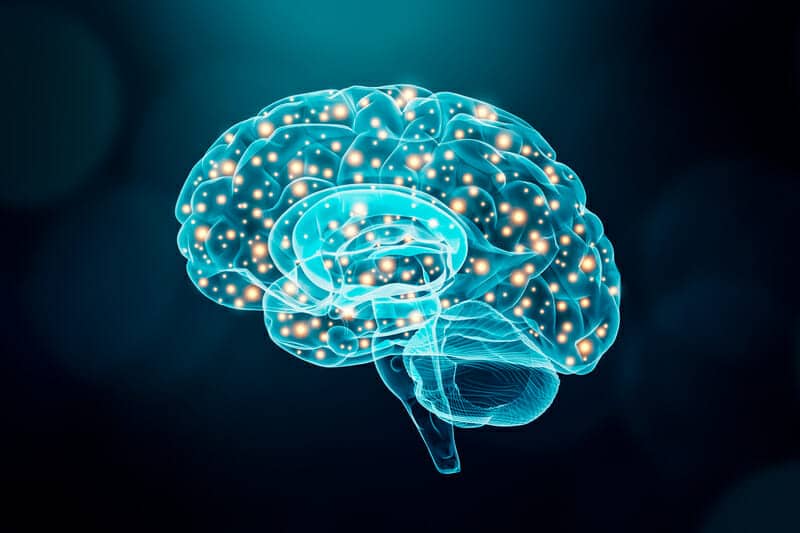Today’s article is guest-written by the brilliant Lucas Auon from Ergogenic Health.
He’s a 24-year-old genius who loves to dive deep into arcane and esoteric supplements 99.99% of the world population will never hear about.
Lucas has volunteered to contribute a regular monthly article about research chemicals and arcane ergogens/nootropics. Enjoy his work!
Nootropics are a class of compounds, conceptualized by the esteemed psychologist, chemist, and pharmacologist, Dr. Corneliu Giurgea in the 1960s (1).
By definition, a nootropic is a compound that increases mental functions including memory, motivation, concentration, and attention (2).
The name “Nootropic” is derived from Greek words for mind (νουσ) and bend, or turn (τρɛπɛιν).
Nootropics can be either naturally derived or synthetically made, however, there is a very strict criterion in order for a substance to be classified as a true nootropic.
This criterion requires that the substance exhibits the following:
- enhancement of learning acquisition;
- resistance to impairing agents;
- facilitation of the interhemispheric transfer of information;
- enhanced resistance to brain “aggressions”;
- increased tonic, cortico-subcortical “control”; and absence of usual pharmacological effects of neuro-psychotropic drugs (3).
During the 1960s, Dr. Giurgea was investigating the possibility of improving and initiating sleep cycles through interaction with GABA, a newly discovered inhibitory neurotransmitter.
He synthesized a compound called piracetam, which interacted with the cholinergic system to promote memory and learning ability (4).
This was regarded as one of the earliest discovered nootropics. Piracetam, is now commonly used by nootropic enthusiasts all around the world.
It is noteworthy to highlight the differences between smart-drugs and Nootropics, whereby commonly used smart-drugs do not meet the full requirements as defined above.
For example, it is well known that prescription-grade medications such as Modafinil are used to treat ADHD are often used off-label for “nootropic” purposes.
These are not technically classified as nootropics, although it does share some crossover effects as a true nootropic.
In this article, we will explore some new modern research chemicals that hold promise as powerful nootropic agents to facilitate the progression of mankind.
The key compounds we will explore are:
1. 9-Methyl-Beta-Carboline (9-MBC).
2. Bromantane (Ladasten).
3. Irdabisant (CEP-26401)
Table of Contents
Toggle9-MBC: The Ayahuasca ‘Inspired’ Alkaloid Nootropic:

9-MBC is a HOT new compound right now in the psychonaut space. For good reason. But first, we need to understand a little about Ayahuasca.
Ayahuasca contains three harmala alkaloids called harmine, harmaline, and tetrahydro-harmine. Harmine and harmaline behave as monoamine-oxidase reversible inhibitors, whereas tetrahydro-harmine inhibits serotonin reuptake (5).
Harmine, tetrahydroharmine and harmaline, the three main alkaloids present in B. caapi, and the harmine metabolite harmol, stimulate adult neurogenesis in vitro (6).
These alkaloids stimulated neural stem cell proliferation, migration, and differentiation in adult neurons.
These findings suggest that modulation of brain plasticity could be a major contribution to the antidepressant effects of ayahuasca (6).
The analogous β-carboline alkaloids, harmaline (HAL) and harmine (HAR), possess a variety of biological properties, including acetylcholinesterase (AChE) inhibitory activity, antioxidant, anti-inflammatory, and many others, and have great potential for treating Alzheimer’s disease (AD) (7).
So how does 9-MBC relate at all?
β-carbolines are potential endogenous and exogenous neurotoxins that may contribute to the pathogenesis of Parkinson’s disease (PD).
9-methyl-β-carboline exhibits multimodal effects that could be beneficial in the treatment of PD.
It shows stimulatory effects to dopaminergic neurons by increasing the expression of tyrosine hydroxylase and its transcription factors in pre-existing dopa decarboxylase immunoreactive neurons (8).
(Source)
Furthermore, 9-methyl-β-carboline has emerged as a substance with the rare property of a protective and regenerative/restorative potential for dopaminergic neurons by inducing gene expression of several neurotrophic factors and decreasing apoptotic cell signals (8).
It reduces protein levels of α-synuclein and inhibits monoamine oxidase A and B.
Finally, 9-methyl-β-carboline acts on multiple targets in the inflammatory cascade by inhibiting the proliferation of microglia, by decreasing chemotactic cytokines and by creating an anti-inflammatory environment in the CNS (8).
It has been shown to…
- Up-regulate, differentiate, and protect dopaminergic neurons, dendrites and synapses, especially in the substantia nigra of the midbrain and in the hippocampus (9).
- Increase dopamine synthesis, unlike caffeine and other stimulants, which deplete dopamine through excessive release and firing.
- Increase neurotrophins/neurotrophic factors (NGF, BDNF, CDNF (6), GDNF, SHH and decrease apoptotic signals like caspase-3). These can significantly enhance executive functioning, alertness, and motivation (10).
Increases/protects/recovers the NADH dehydrogenase (or “complex I” which catalyzes the transfer of electrons between NADH and Co-Q10), enhancing the mitochondrial respiratory chain (11).
Here’s a glowing anecdote experience with 9-MBC:
“I’ve been using 15-30mg once a day in the mornings for only a week now and my 40mg Vyvanse dosage is back at full throttle.
The magic is back – I’m literally back at stage 1 of amphetamine the drug you love to hate. It’s as if I took it for the first time, and honestly I think I’d prefer dropping to 20mg now.
I used to take 80-160mg Vyvanse for a while too so I can attest to the fact that 9-Me-BC works. It’s very easy to source online and has solid nootropic benefits too.
The only thing I haven’t tried in my repertoire is microdosing stims for sensitization but I’m not willing to take the risk plus I’m fairly sure that it won’t even work as explained in this post.
As of right now, I plan to keep using 15mg 9-Me-BC daily and using 20-40mg Vyvanse once a week instead.
If I were to rank effectiveness on tolerance reversal and repairing subjective damage from continued amph (ab)use it would go:
9-MBC >>> Bromantane > BPC-157 >>> the rest. Highly recommended, this stuff instantly erases withdrawals and reverses tolerance – what more could you ask for?”
Bromatane: The World’s First Synthetic Adaptogen
(Source)
The next nootropic comes from Russia. How about the name itself… BRO-MAN-TANE!
Bromantane is truly a star nootropic, particularly amongst the athletic performance athletes.
In fact, this compound is so effective that it is in fact, BANNED by WADA.

Actoprotectors are preparations that enhance body stability against physical loads without increasing oxygen consumption or heat production.
Or, in short, actoprotectors are synthetic adaptogens with a significant capacity to improve physical performance (12).
Bromantane, being an actoprotector, is linked to independent tolerance of extreme conditions (physical load, stress, hypoxia, ischemia, hyperemia, gravitation overload etc.), which fact suggests their influence on the basic mechanisms of resistance (12).
Bromantane, upon oral induction, is quickly but not fully absorbed from the gastrointestinal tract into the blood (bioavailability: 42%).
It is quickly, and in large quantities, distributed over the tissues and organs, and is slowly eliminated from the body.
Bromantane is highly lipophilic, is distributed into the lipids of brain and fat tissue, and (finally) is deposited in adipose tissue.
The speed of bromantane absorption from the gastrointestinal tract is much higher in women, so the half-life is respectively lower than in men.
The time to achievement of the maximum concentration of blood bromantane is 2.75 hours in women, and 4.0 hours in men.
The drug is metabolized in the liver, but its elimination occurs mostly through the adrenal gland (12).
Bromantane lacks hypno-sedative and neuromuscular relaxant properties, it does not possess any addictive potential.
At its application, it does not, unlike typical psychostimulants, develop the phenomena of hyperstimulation (12).
It was determined that bromantane has a positive influence on the indices of psychophysiological conditions: range and stability of attention, complex sensomotor reaction, and the parameters of successful operator activity (Viatleva et al., 2000).
The mechanism of bromantane action is based on the facility to increase the activity of the lower centers of the central nervous system (the hypothalamus nuclei, the reticular nuclei of the operculum, the hippocampus).
It does not exert any expressed action on noradrenergic mediators, but implements the activation properties through the dopaminergic system.
Bromantane strengthens GABA-ergic mediation, reducing gene expression, supervising synthesis of GABA-transporters, and functioning as a return capture mediator. A potentiality for central serotonin holding effects is also assumed.
One More Thing: Bromantane Increases Sex-Drive!
Bromantane can be a powerful way to rev up sex drive, libido and orgasm intensities, whilst delaying sexual exhaustion, via reducing prolactin.
3 days of Bromantane treatment increased rats’ sex drive (desire for sexual activity). This dose-dependent effect may be caused by the increase in dopamine activity.
In male mice, Bromantane administration increased sperm count and sperm movement. It also helped reduce embryo loss in female mice (13).
CEP26401: The “Modafinil Alternative” Compound

Part of the mechanism by which Modafinil enhances mood, attention and focus is by virtue of its ability to increase histamine.
Therefore, we are now on the search for similar compounds that can also raise histamine potently.
CEP-26401 (irdabisant) is one of these compounds.
This compound is a potent and selective histamine H₃ receptor antagonist/inverse agonist with cognition-enhancing and wake-promoting activities (14).
CEP-26401 is a histamine H3 receptor antagonist (which actually increases histamine) in a phase I clinical development at Cephalon, improves cognition in Alzheimer’s disease patients and for the treatment of schizophrenia. Cephalon was acquired by Teva in October 2011.
High affinity of CEP-26401 for H3R was demonstrated in radioligand binding displacement assays in rat brain membranes (Ki = 2.7 ± 0.3 nM) and recombinant rat and human H3R-expressing systems (Ki = 7.2 ± 0.4 and 2.0 ± 1.0 nM, respectively) (15).
CEP-26401 displayed potent antagonist and inverse agonist activities in [35S]guanosine 5′-O-(γ-thio)triphosphate binding assays.
After oral dosing of CEP-26401, occupancy of H3R was estimated by the inhibition of ex vivo binding in rat cortical slices (OCC50 = 0.1 ± 0.003 mg/kg), and antagonism of the H3R agonist R-α-methylhistamine- induced drinking response in the rat dipsogenia model was demonstrated in a similar dose range (ED50 = 0.06 mg/kg).
CEP-26401 improved performance in the rat social recognition model of short-term memory at doses of 0.01 to 0.1 mg/kg p.o. and was wake-promoting at 3 to 30 mg/kg p.o. In DBA/2NCrl mice, CEP-26401 at 10 and 30 mg/kg i.p. increased prepulse inhibition (PPI), whereas the antipsychotic risperidone was effective at 0.3 and 1 mg/kg i.p.
Coadministration of CEP-26401 and risperidone at subefficacious doses (3 and 0.1 mg/kg i.p., respectively) increased PPI.
These results demonstrate potent behavioral effects of CEP-26401 in rodent models and suggest that this novel H3R antagonist may have therapeutic utility in the treatment of cognitive and attentional disorders.
CEP-26401 may also have therapeutic utility in treating schizophrenia or as adjunctive therapy to approved antipsychotics (15).
You can learn more about Irdabisant here:
*This is NOT medical advice. Please seek professional medical advice from a qualified healthcare professional*
About Lucas Aoun, Founder of Ergogenic Health
Taken directly from his website, Ergogenic Health:
At Ergogenic Health, we research the best products from around the globe. Through integrating modern scientific evidence, anecdotal/personal reports and traditional wisdom – we create a lifestyle platform of supreme products, education and consulting to promote biohacking for those who wish to explore their version of optimal performance.
Feel free to check out his FREE courses for testosterone optimization and hacking your sleep!
And definitely don’t forget to check out his Instagram and podcast. 😉





